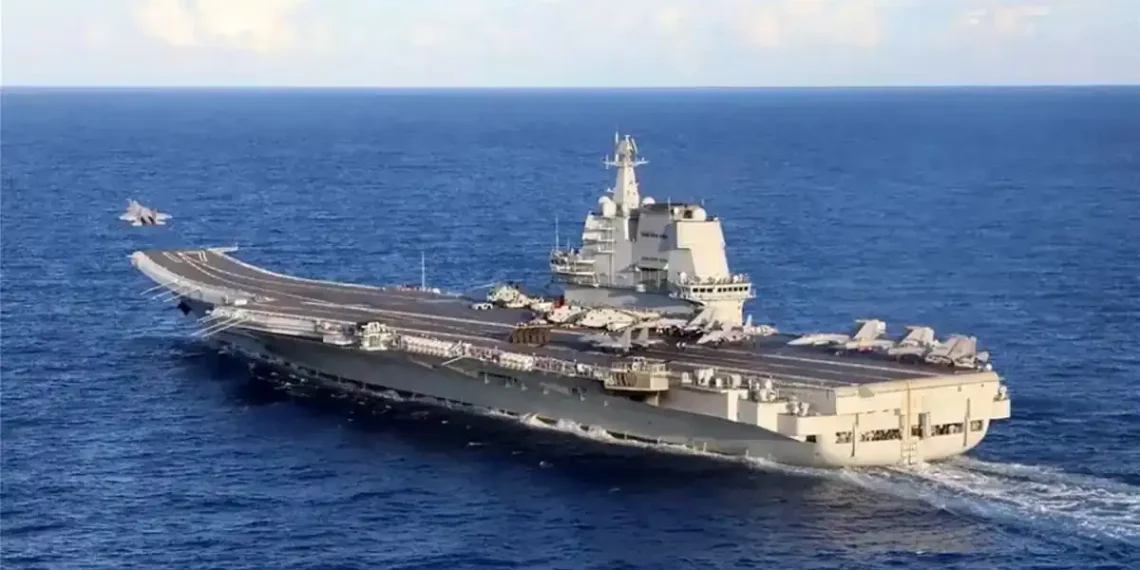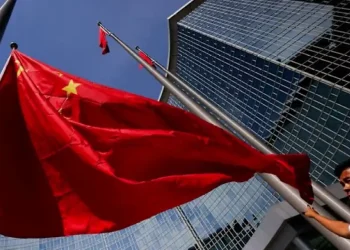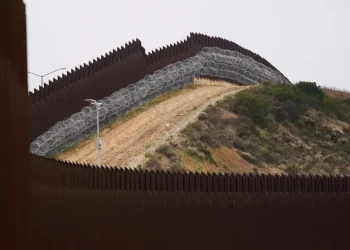China’s Aircraft Carriers Venture Deeper Into the Pacific—And Bigger Warships Are on the Way
For the first time ever, China has deployed two aircraft carrier strike groups into the open Pacific, signaling a bold shift in naval power—and a clear message to rivals, especially the United States.
Over the past month, Chinese aircraft carriers have been operating farther from home, more aggressively, and with more advanced capabilities than ever before. From the Philippines to Japan, from the Yellow Sea to the Western Pacific, the People’s Liberation Army Navy (PLAN) is flexing its maritime muscle in ways that analysts say are meant to test cutting-edge technology and show that China is ready to challenge the U.S. Navy’s dominance.
At the heart of this show of force is China’s newest aircraft carrier, Fujian. In a major milestone, the Fujian has just completed its first at-sea aircraft launch and recovery drills using an advanced electromagnetic catapult system—a technology previously exclusive to the U.S. Navy’s newest carrier, the USS Gerald R. Ford.
An Expanding Presence Near Hot Zones
This surge in Chinese naval activity isn’t just about new technology—it’s about location and timing.
- In early May, the Shandong carrier group began exercises north of the Philippines.
- The Fujian, still undergoing sea trials, appeared in disputed waters west of the Korean Peninsula.
- Meanwhile, the aging but still active Liaoning was spotted conducting drills near Japan’s exclusive economic zone.
By late May, two of China’s carrier groups were operating in the open Pacific simultaneously—an unprecedented move. Japanese officials reported the Shandong and support ships exercising southeast of Okinawa, while Liaoning was spotted east of Iwo Jima, edging toward Japan’s easternmost island.
Analysts say these moves serve multiple purposes: testing military capabilities, improving operational range, and sending an unmistakable geopolitical signal. Notably, these exercises straddled waters crucial to any U.S. or allied response if China were to move militarily against Taiwan.
Taiwan at the Center of Tensions
Taiwan continues to be a major flashpoint in U.S.-China relations. The island is self-governed and democratic, but Beijing claims it as its own and has not ruled out the use of force to bring it under mainland control.
A Taiwanese security official told CNN that throughout May, China regularly deployed around 70 warships and coast guard vessels across the region, spanning the Bohai Sea to the South China Sea.
“This goes beyond defensive posturing,” the official said. “It’s about asserting that the entire first island chain falls within China’s sphere of influence.”
The “first island chain”—stretching from Japan to the Philippines and Indonesia—is seen by both Washington and Beijing as a critical strategic barrier. And China appears intent on pushing that line outward.
Beyond the First Island Chain
Now, China is going beyond that line. Analysts and regional defense officials have noted that Chinese carriers are increasingly operating beyond the so-called “second island chain,” which includes Guam, Saipan, and parts of Micronesia—territories and interests closely tied to the U.S.
Japanese Chief Cabinet Secretary Yoshimasa Hayashi recently warned that China is “demonstrating the ability to conduct long-distance operations in the Pacific,” referencing activity near Japan’s Minamitorishima island.
Ray Powell, director of Stanford’s SeaLight maritime transparency project, says this represents a serious upgrade in PLAN capabilities: “This is a major milestone. China is signaling that its navy can stay out longer, sail farther, and operate with purpose.”
Sending a Strategic Message
While Chinese officials insist these are routine training exercises, the strategic message isn’t lost on regional neighbors or military analysts.
“Beijing is telling the world that it’s a major naval power,” said Carl Schuster, a former U.S. Navy captain. “And it’s making it clear that power can and will be used near its neighbors’ shores if it chooses.”
U.S. Defense Secretary Pete Hegseth echoed these concerns at the recent Shangri-La Dialogue in Singapore, warning that China’s use of military pressure around Taiwan and in the South China Sea amounts to coercion:
“Any unilateral attempt to change the status quo in the region by force is unacceptable,” Hegseth said.
Bigger Ships, Bolder Goals
This recent naval push is backed by China’s increasingly powerful fleet. The PLAN now boasts the world’s largest navy by ship count, having overtaken the U.S. Navy around 2020. Its newest surface warships include:
- Type 055 destroyers – 12,000-ton heavyweights seen by many analysts as among the world’s most capable surface combatants.
- Type 052DM destroyers – Smaller but modern ships, often accompanying carrier strike groups.
A recent report in China’s state-run Global Times suggested the PLAN could eventually operate in all the world’s oceans. Military expert Zhang Junshe argued that China’s global economic footprint justifies the ability to project naval power worldwide.
That may include new deployments in the Indian and Atlantic Oceans.
The Rise of the Fujian
Central to all this is the Fujian, which may soon be officially commissioned. At roughly 80,000 tons, it’s the largest non-American warship ever built and can carry about 50 aircraft—10 more than China’s older carriers.
But it’s the technology onboard that sets Fujian apart. Its electromagnetic catapult system (EMALS) allows fighter jets to take off with heavier payloads and fuel loads than traditional ski-jump ramps, meaning more range and more firepower. It’s expected to operate stealth fighters like the naval J-35, which cannot fly off the Liaoning or Shandong.
Even more ambitious is China’s next carrier, the Type 004, which is expected to combine EMALS with nuclear propulsion—like America’s USS Ford. A nuclear-powered carrier wouldn’t need to refuel, enabling it to stay at sea for extended operations thousands of miles from Chinese shores.
A Fleet Still Learning
Despite these impressive strides, experts caution that China is still learning what it takes to run a global blue-water navy.
“The PLAN’s carrier force is still developmental,” Powell said. “But China is closing the gap.”
Beijing has taken its first major step into deep-sea carrier operations. And while it may not yet rival the U.S. Navy’s decades of experience, it’s moving quickly—and the world is watching.
This article was rewritten by JournosNews.com based on verified reporting from trusted sources. The content has been independently reviewed, fact-checked, and edited for accuracy, neutrality, tone, and global readability in accordance with Google News and AdSense standards.
All opinions, quotes, or statements from contributors, experts, or sourced organizations do not necessarily reflect the views of JournosNews.com. JournosNews.com maintains full editorial independence from any external funders, sponsors, or organizations.
Stay informed with JournosNews.com — your trusted source for verified global reporting and in-depth analysis. Follow us on Google News, BlueSky, and X for real-time updates.














